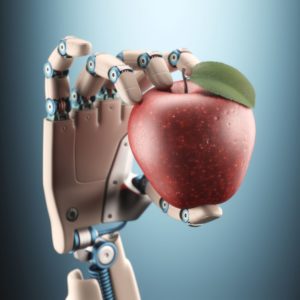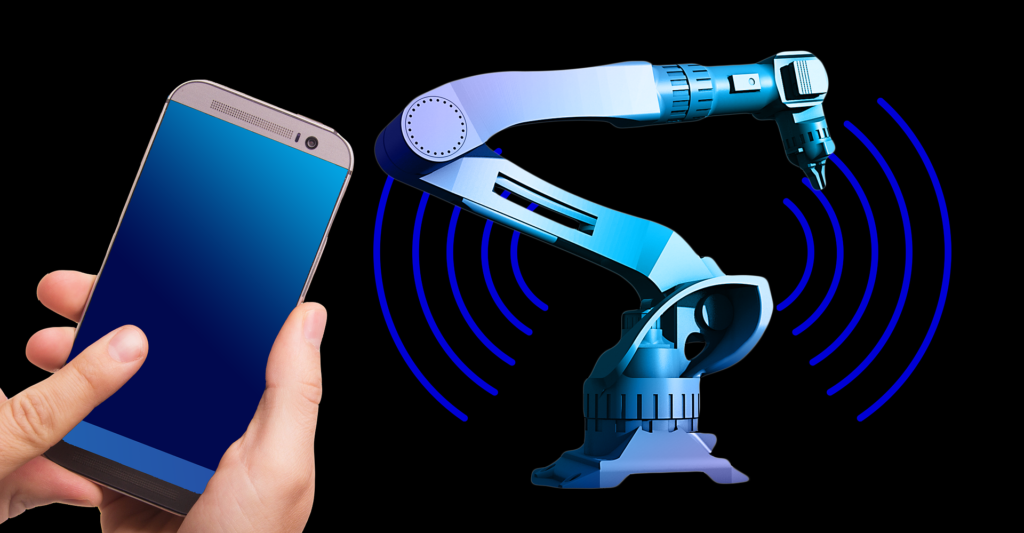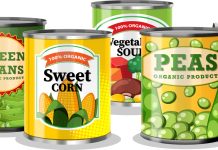 From the handling of food products to robotic islands integrated into production lines, to the packaging up to end-of-line palletising. Robotics is at home in the food industry, with its many advantages, such as processing hygiene and more accurate movements, to adapt to the different products.
From the handling of food products to robotic islands integrated into production lines, to the packaging up to end-of-line palletising. Robotics is at home in the food industry, with its many advantages, such as processing hygiene and more accurate movements, to adapt to the different products.
The food industry is one of the fastest growing sectors for automation, both in terms of production, as well as primary packaging and end-of-line palletising. The solutions currently available cover many needs of the food industry. Robots are used for milking cows, in greenhouses, for portioning foodstuffs, to select and measure ingredients, for marking, packaging, palletizing. The development and use of robotic solutions have improved the productivity and profitability of food businesses, as well as the cycle time and energy efficiency. In particular, thanks to parallel kinematic robots, modern production lines now reach speeds that until a few years ago were considered impossible.
Manufacturers have perceived that the food industry is increasingly focusing on the robotization of some production processes; for this reason they are developing new solutions to simplify the management of applications for the selection of functions, packaging and palletising to facilitate the use and management of the various automated systems. The food industry relies on SCARA robots (Selective Compliance Assembly Robot Arm), based on a 4-axis design and 4 degrees of freedom for their high speed performance and repeatability in mass production; anthropomorphic robots with several axes (even more than six axes), used for assembling, material handling, and packaging for quick and accurate packaging; parallel kinematics robots for packaging, production, assembly and handling of materials at high speed; and vision systems for quality control.
Delicate handling. Some foodstuffs require delicate moving and handling. As in the case of bakery and confectionery products, which can break or be irrevocably damaged if not handled with due care. The automatic islands in which a robot must handle, lift and move delicate products are a reality, thanks to special grippers designed not only for picking the product with delicacy but also to reduce the percentage of waste and scrap. Modern robots can handle with care all kinds of food, from the beginning to the end of the line, with special grippers and suckers, specially designed to handle the involved product, and to adapt to the different processing operations by entering data regarding the type of food, size, weight and other characteristics.
In recent years, robotic arms characterized by their degrees of freedom (sometimes even more than 6) that mimic human functions made their appearance on the market, and in future they may be used to cooperate in line. The use of robots has improved the degree of hygiene both in the production and in the packaging phase. Some robots can be implemented with success in direct contact with foods, guaranteeing hygiene, accuracy and operational flexibility, as well as for packaging, providing them also with operating options that include metal detection, weighing, quality control, optimization of the positioning inside the package; this also thanks to the use of camera systems. These solutions can also be used to identify defective components or failures before packaging or shipment.

Robot for the packaging of food. Food packaging accounts for a significant percentage of the production cost, and the use of robots in this phase allows to minimize the impact. In addition, the hygienic design of many robots on the market, as well as the use of corrosion-resistant surfaces, lubricants with edible oils class NSF H1, parts made in stainless steel, coatings designed to reduce the risk of accumulation of dust and debris, make these robots compatible with the washing and cleaning procedures normally used in the food industry, so as to allow their use also in direct contact with food products.
The movements of robots used for packaging operations are becoming more and more accurate and fast, with the possibility of choosing compact models suitable for working in small spaces. Some robots can be used also in refrigerated environments, for packaging and palletizing frozen food, without the need of heating mechanical components, and in some cases even without protective wrappings, thereby limiting heat emissions inside the refrigeration compartment.
No to monotonous and heavy operations. Monotonous and heavy operations, such as moving or assembling, are not infrequent in the food industry. Pick-and-place robots are designed for performing these tasks at high speeds, with constant and accurate results, allowing a high degree of standardization of the product. These robots are increasingly used in the palletising operations, end-of-line automation, picking of secondary packages such as boxes or bags. For these operations, robots relieve personnel from heavy and potentially dangerous work. By investing in end-of-line robotics, a company can improve process management and count on greater operational flexibility.
Collaborative robots. Collaborative robotics (cobot) provides that operators monitor the production processes by sharing the same workspace of the robot and being in direct contact with them. These hybrid systems act as an assistant when complex and sensitive tasks are involved that can’t be – or are difficult to be – automated, or when the robot cannot mimic human skills and flexibility, but can only assist the operator in some operations. The result is an increase in production speed and flexibility, as well as the reduction of errors. The robots carry out tough jobs in order to reduce the physical burden of the operator, assist him in moving and positioning heavy or dangerous objects, or for assembly interventions, when continuous repeated gestures are required. The operator works alongside with the robot: workplace safety becomes an important point for the success of collaborative robotics.
 This is guaranteed by using robots with limited power, load capacity and speed of movement, constructed of lightweight materials in order to minimize the risk of injury in the event of accidental collisions. Modern collaborative robots can be equipped with photocells that stop the machine immediately or slow down its movements, in presence of an operator nearby, in order to prevent accidental impacts. Working in close contact with the operator, it is essential that the robot is easy to program and handle. In the future, perhaps, operators will give “orders” to the robot in an easier way, probably with voice commands, or the robots will be able to remember human movements and repeat them over and over with exactly the same precision. Collaborative robotics is also working to ensure that the machine can recognize any errors and change behaviour on the basis of these errors. Thanks to detection sensors and algorithms, the “cobot” will learn to distinguish when an operation is correct and when there is an anomaly, interrupting what it is doing and alerting the operator: a sort of self-learning function.
This is guaranteed by using robots with limited power, load capacity and speed of movement, constructed of lightweight materials in order to minimize the risk of injury in the event of accidental collisions. Modern collaborative robots can be equipped with photocells that stop the machine immediately or slow down its movements, in presence of an operator nearby, in order to prevent accidental impacts. Working in close contact with the operator, it is essential that the robot is easy to program and handle. In the future, perhaps, operators will give “orders” to the robot in an easier way, probably with voice commands, or the robots will be able to remember human movements and repeat them over and over with exactly the same precision. Collaborative robotics is also working to ensure that the machine can recognize any errors and change behaviour on the basis of these errors. Thanks to detection sensors and algorithms, the “cobot” will learn to distinguish when an operation is correct and when there is an anomaly, interrupting what it is doing and alerting the operator: a sort of self-learning function.
Integration into existing production environments. The flexibility required from modern robots involves not only format change-overs or automation, but also the integration without problems into existing production environments, as machines and conveyors already present in the production line. To this end, companies are continuously developing software for connecting the various robots to individual machine control systems, in order to optimize the interaction between robot and conveyor belts, guaranteeing faster and more efficient handling of any product.
Vision systems, position and force sensors
Food industries are increasingly implementing robots equipped with vision systems: cameras filming food products and transferring the image to the robot that can select them by colour, shape, size, analysing a two-dimensional image. Whilst the use of two cameras can give a three-dimensional vision of the food (3D). This technology is rapidly gaining popularity: the robot can pick objects in bulk, speed up response times, identify even small objects, and carry out more accurate movements thanks to a higher camera resolution.
With vision systems, the robots have visual information that can assist them in their work; and with suitable software they can adjust to different production requirements. Likewise, robots can be equipped with position and force sensors, so that the machine can adjust to working conditions, identify the packaged or loose product present in the working area, and apply the correct grip force. These accessories improve even more the operating flexibility of the robots in the food industry, so that they can easily adapt to new situations and to increasingly customized productions.



